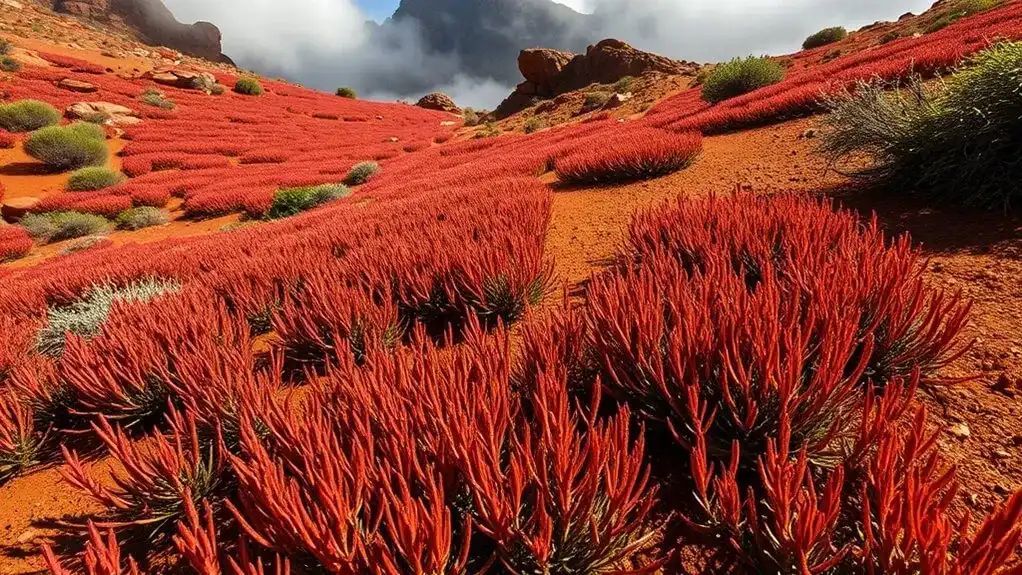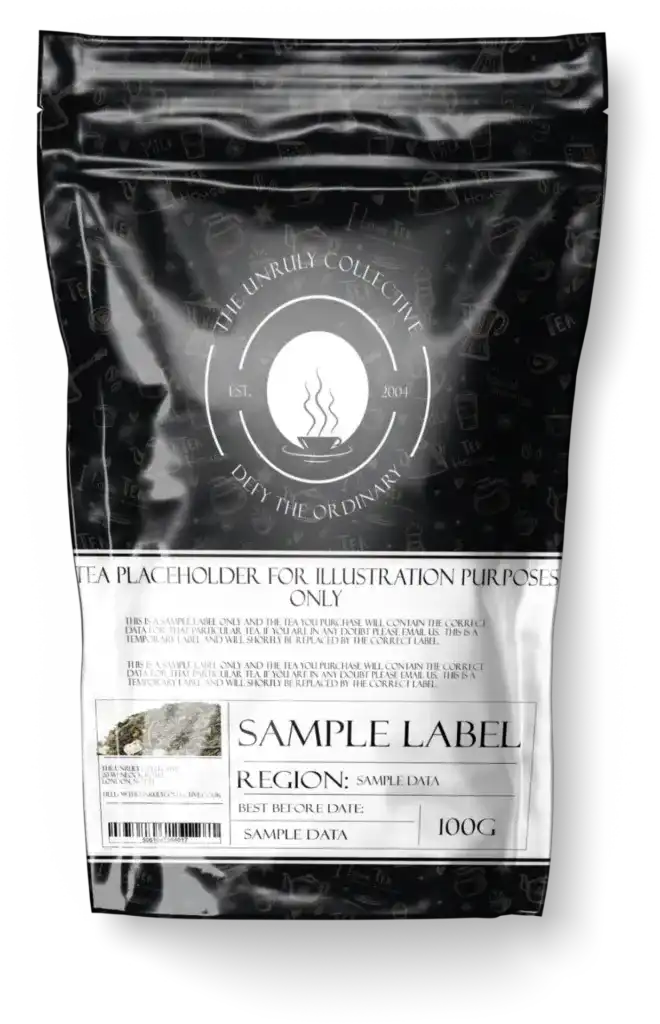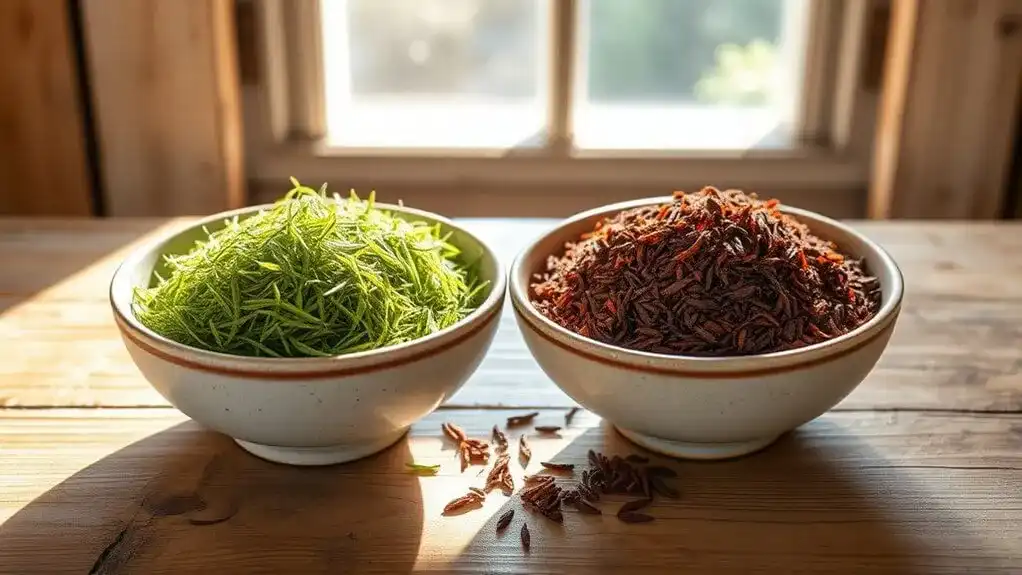South Africa's Cederberg mountains provide the perfect terroir for rooibos tea, with sandy acidic soils and a Mediterranean climate creating its signature flavor. The region's unique combination of winter rainfall, eroded sandstone, and extreme temperatures influences the plant's growth and taste characteristics. While farmers have tried growing rooibos elsewhere, the distinctive environmental factors of the Cederberg region can't be replicated, making it the only place where authentic rooibos thrives. Understanding these precise growing conditions reveals nature's remarkable influence on this beloved tea.
Key Points
- Cederberg's sandy, acidic soils with pH 4.5-5.5 create ideal growing conditions that directly influence rooibos's distinctive flavor profile.
- Hotter, drier areas within the growing region produce rooibos with more robust and concentrated flavors.
- The unique combination of winter rainfall, mountain terrain, and soil biology creates a terroir impossible to replicate elsewhere.
- Temperature extremes in the region cause rooibos plants to develop smaller leaves and deeper roots, affecting taste characteristics.
- The Mediterranean climate with hot, dry summers enhances natural flavor development during the growing season.
The Unique Geography of South Africa's Rooibos Region

The Cederberg mountains rise majestically in South Africa's Western Cape Province, creating the perfect sanctuary for rooibos tea cultivation. This unique region's geology features eroded sandstone that breaks down into soft white soil, providing ideal growing conditions for the indigenous plant.
The Cederberg geology and climate work in harmony, with winter rainfall ranging from 180mm to 500mm annually. These conditions support natural rooibos biodiversity, particularly in the region's valleys where wild plants thrive. The area's distinctive terroir stems from the interplay between soil biology, seasonal rainfall patterns, and mountainous terrain. The soil maintains very acidic conditions that are essential for successful rooibos growth. The indigenous Khoisan tribes first discovered the plant's potential in this region, recognizing its unique properties. However, climate change projections indicate that the region will experience warmer and drier conditions in the future, threatening traditional growing areas.
While farmers have explored growing rooibos in other locations, the plant remains commercially viable only in this specific region, where the combination of climate, soil composition, and natural ecosystems creates supreme growing conditions.
Soil Composition and Its Impact on Rooibos Character
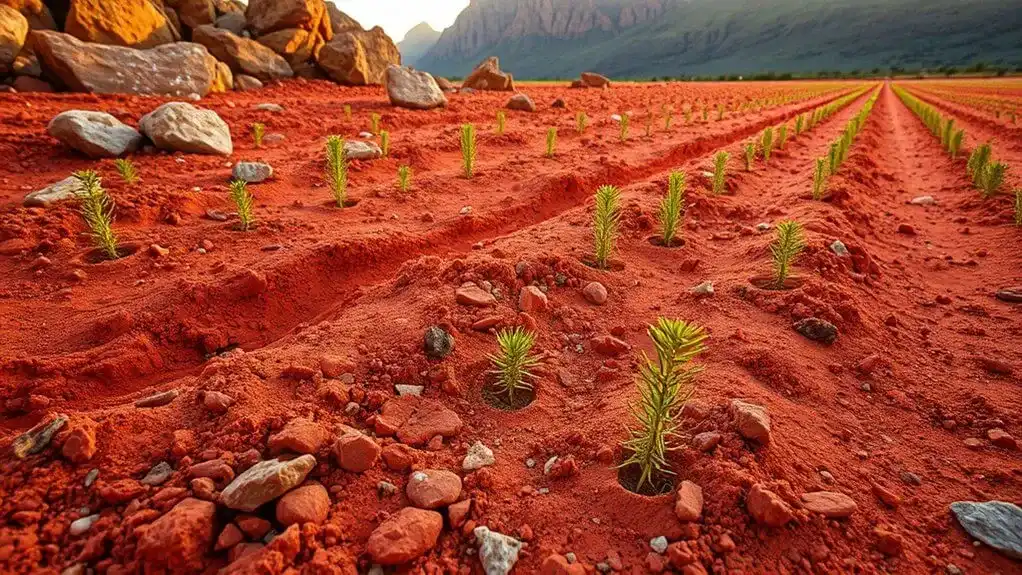
Beneath Cederberg's rugged terrain lies a complex soil ecosystem that shapes rooibos tea's distinctive character. The region's sandy, acidic soils maintain a pH between 4.5 and 5.5, creating the perfect environment for this unique plant to thrive.
What makes these soils exceptional isn't just their acidity but their intricate microbial interactions. A diverse community of microorganisms, including specific rhizobia and mycorrhizal fungi, forms essential partnerships with rooibos roots. These relationships help the plant adapt to its environment and contribute to its signature flavor profile. The plant's remarkable adaptability allows it to endure scorching summers and freezing winters while maintaining its distinct qualities.
The well-drained, low-organic matter soil composition, combined with the region's precise water dynamics, creates a terroir that's proven impossible to replicate elsewhere. This explains why attempts to grow premium rooibos outside South Africa's Cederberg region haven't succeeded commercially.
Climate Factors Shaping Rooibos Development
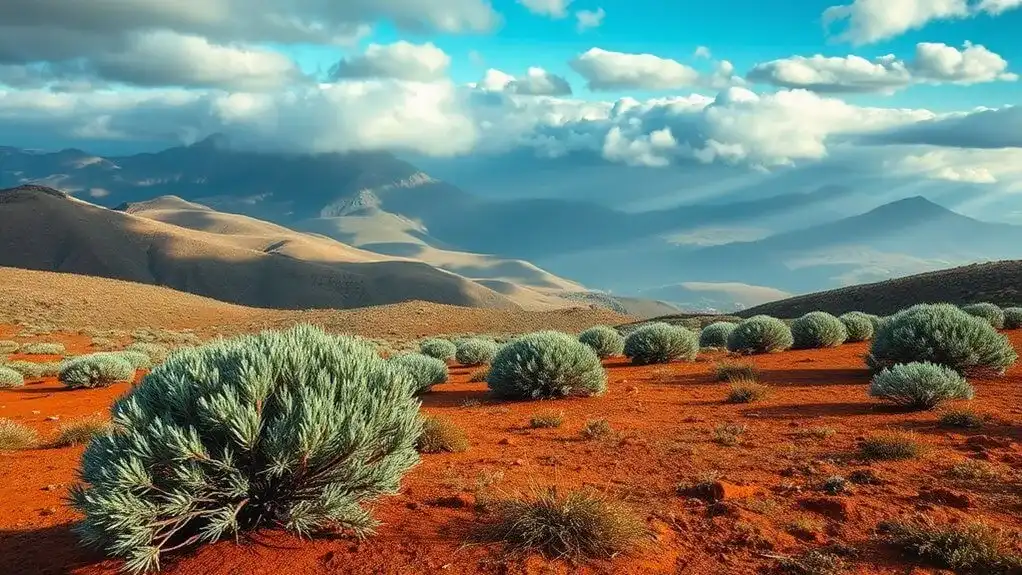
While rooibos has adapted remarkably to South Africa's Cederberg region, climate factors play a decisive role in shaping its growth and flavor development. Rainfall variability considerably influences the plant's development, with winter rains becoming less predictable and shifting later into spring. Temperature extremes force the plant to adapt by growing smaller leaves and deeper roots, directly affecting its flavor profile. Research shows that hotter, drier areas consistently produce rooibos with more robust and intense flavors. Farmers have responded to these challenging conditions by planting tall shade trees between the bushes to protect them.
The plant's relationship with water is particularly complex. During the critical first three months of growth, rooibos consumes over a third of its annual water needs. Solar radiation and vapor pressure strongly drive the plant's transpiration patterns, while soil moisture has a lesser impact due to the plant's ability to access deeper water reserves. These climate interactions ultimately determine the tea's distinctive characteristics and quality.
The Art of Cultivation in the Cederberg Mountains

Rooted deeply in generations of farming wisdom, rooibos cultivation in the Cederberg Mountains represents a delicate balance between natural processes and human intervention. The area's unique sandstone-derived soil, combined with its distinctive mycorrhizal community, creates the perfect environment for this remarkable legume. With annual rainfall between 200-400 millimeters, the region's Mediterranean climate provides ideal growing conditions. The hot, dry summers create optimal stress conditions that enhance the plant's natural flavor development.
Local cultivation techniques embrace organic practices that protect the soil's delicate ecosystem. Farmers prepare fields in autumn using specialized tine implements that preserve soil structure, while no-till approaches maintain essential micro-organic biodiversity. Seeds start their journey in nurseries before moving to the fields, where they benefit from the region's acidic, sandy soil conditions. The plant's natural nitrogen-fixing abilities, coupled with rotation crops during rest periods, help maintain soil fertility. This symbiotic relationship between plant and place produces rooibos tea's characteristic flavor profile.
Traditional Vs Modern Growing Methods
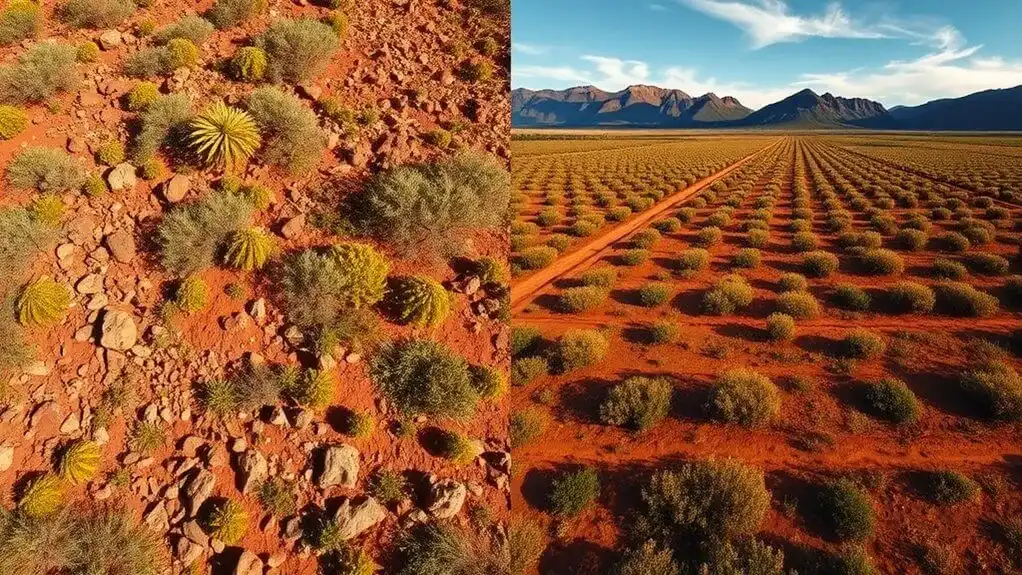
Throughout the evolution of rooibos cultivation, traditional and modern growing methods have shaped the industry's landscape, each offering distinct advantages and challenges. Traditional practices emphasize hand-harvesting, natural fermentation, and soil-building techniques that have been passed down through generations in the Cederberg region. The grading and sorting process after sun-drying ensures only the highest quality rooibos reaches consumers. The plant's remarkable ability to thrive in drought conditions makes it particularly well-suited to the arid South African climate.
Modern innovations have introduced mechanized processing, advanced irrigation systems, and climate adaptation strategies to boost production efficiency. While conventional farming methods typically yield higher outputs, they often rely on synthetic inputs that can impact the environment. There's now a growing shift toward combining the best of both approaches, with many farmers adopting organic methods that honor traditional practices while embracing modern technologies. This hybrid approach helps maintain soil health, guarantees quality control, and addresses the increasing global demand for rooibos tea.
Preserving Authentic Rooibos Terroir

Much like fine wine, authentic rooibos tea's character stems from its exclusive terroir in South Africa's Cederberg region. To protect this unique heritage, the industry has secured Protected Designation of Origin (PDO) regulations, which guarantee rooibos is only produced within the Cape Floral Kingdom's strictly defined boundaries.
These PDO regulations work alongside traditional techniques that have been perfected over generations. Local farmers maintain quality standards through careful cultivation in the region's acidic, sandy soils and precise processing methods, including sun-drying leaves to exactly 10% relative humidity. The innovative winery Audacia has demonstrated rooibos' versatility by using it as a natural wine preservative. All steps must adhere to strict traceability measures for terroir preservation. This relationship with the land dates back centuries, as historical records show settlers first used rooibos in 1772. This thorough approach guarantees that authentic rooibos retains its distinctive characteristics, which can't be replicated elsewhere despite numerous attempts to grow the plant in other regions.
Conclusion
South Africa's rooibos terroir tells a story as rich as the tea itself, with every sip revealing the wisdom of generations past. The Cederberg region's unique combination of sandy soils, Mediterranean climate, and traditional farming methods creates a signature flavor profile that can't be replicated elsewhere. As modern cultivation practices evolve, preserving these distinct growing regions guarantees that rooibos will continue to captivate tea enthusiasts worldwide.
